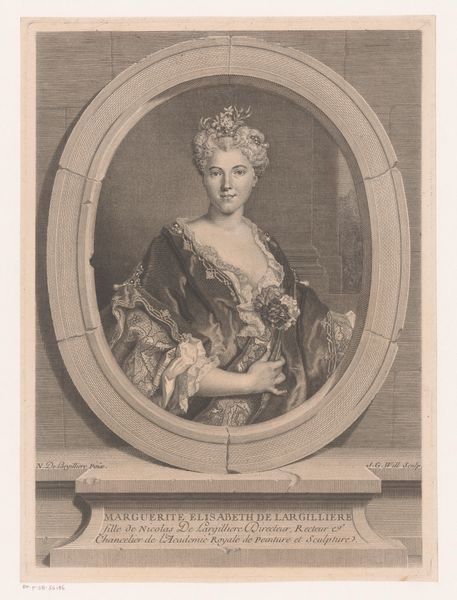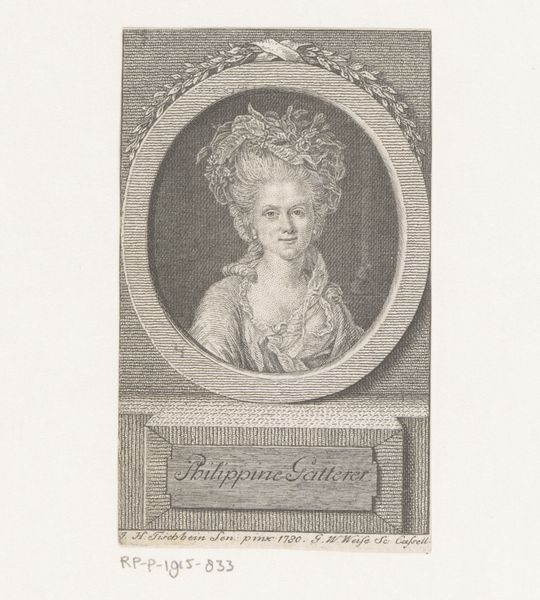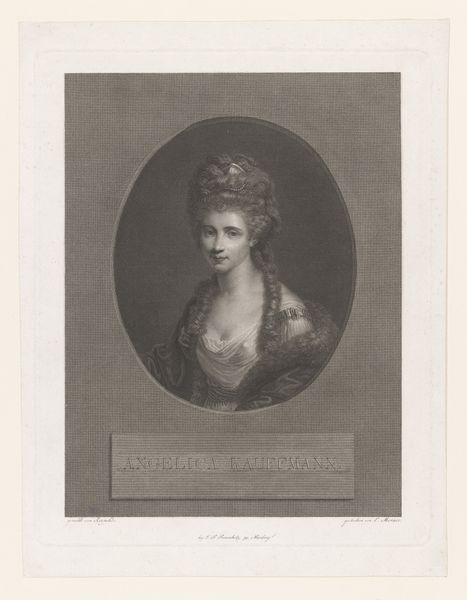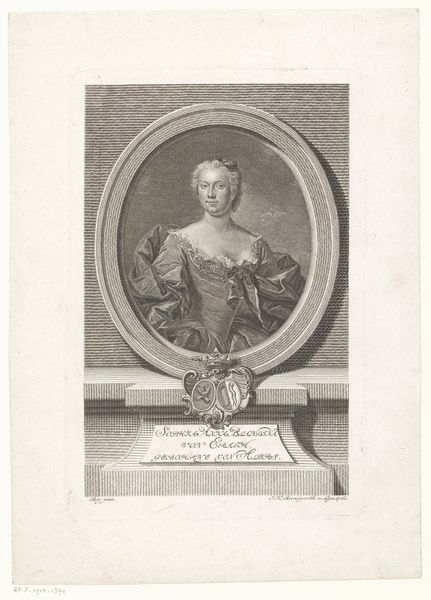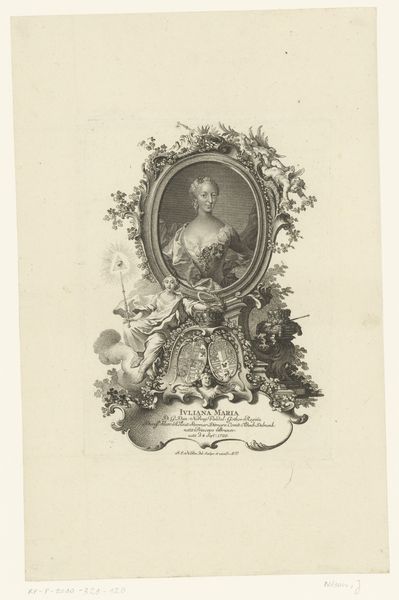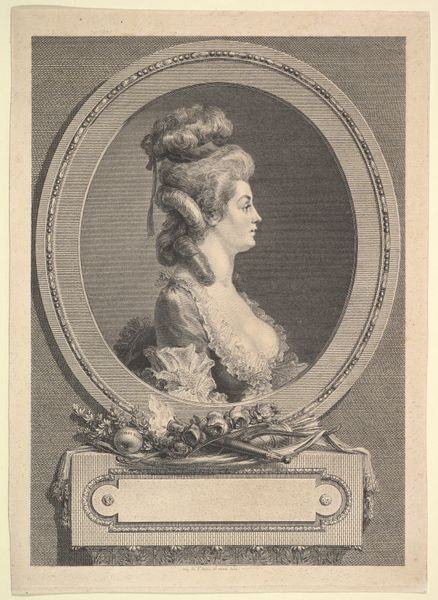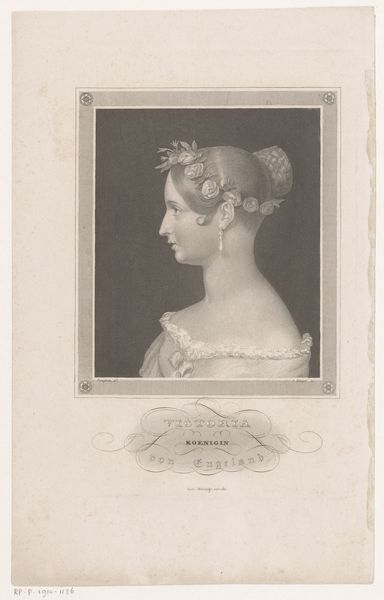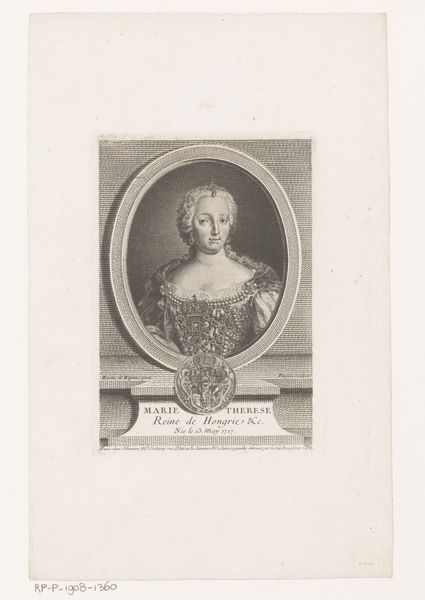
Portret van Antoinette Du Ligier de la Garde Deshoulières 1778 - 1787
0:00
0:00
francoisrobertingouf
Rijksmuseum
engraving
#
neoclacissism
#
engraving
Dimensions: height 173 mm, width 104 mm, height 104 mm, width 63 mm
Copyright: Rijks Museum: Open Domain
Curator: This portrait of Antoinette Du Ligier de la Garde Deshoulières immediately strikes me as classically restrained. The oval frame, the neat lines, it evokes a sense of order and decorum. Editor: Yes, there’s a powerful sense of intentionality, isn't there? We’re looking at an engraving by François Robert Ingouf, dating roughly between 1778 and 1787, and I sense this clear Neoclassical yearning to idealize, to present a poised vision of this celebrated 17th-century poet, also known as Madame Deshoulières. It’s as if they sought to distill her essence for posterity. Curator: Precisely! It makes you consider the image’s psychological function. The image is presented atop a pedestal as an almost tombstone image and the inscriptions make it all seem very commemorative. The image-makers aimed to immortalize her achievements, transforming her into an enduring cultural icon. There's a dialogue between lived experience and constructed identity here. Editor: A fascinating observation! Because this isn't just about capturing likeness; it’s about cementing a legacy through visual means, and as a mode of political enshrinement of power, of genius, and of feminine representation. I think the visual language—the neat and almost rigid quality of line—says volumes about societal values and expectations during that era. A woman in frame, constrained. Curator: Exactly, the choice of engraving allows for the proliferation of her image. Prints democratized portraiture, disseminating likeness and therefore, ideas. This also implies a public consumption of the figure of Madame Deshoulières, turning a woman from the previous century into a kind of evergreen role model. It also makes me think, what can we excavate of Madame Deshoulières the poet herself from this? How much is about Ingouf's aesthetic priorities? Editor: Perhaps, this image served to make her safe for consumption in the late 18th century? We see the negotiation between historical authenticity and contemporary values. Curator: Indeed. As with so many historical representations, it asks us to consider how images actively construct meaning. Editor: It’s a potent reminder of art's role in shaping and negotiating the past and creating new social realities.
Comments
No comments
Be the first to comment and join the conversation on the ultimate creative platform.
